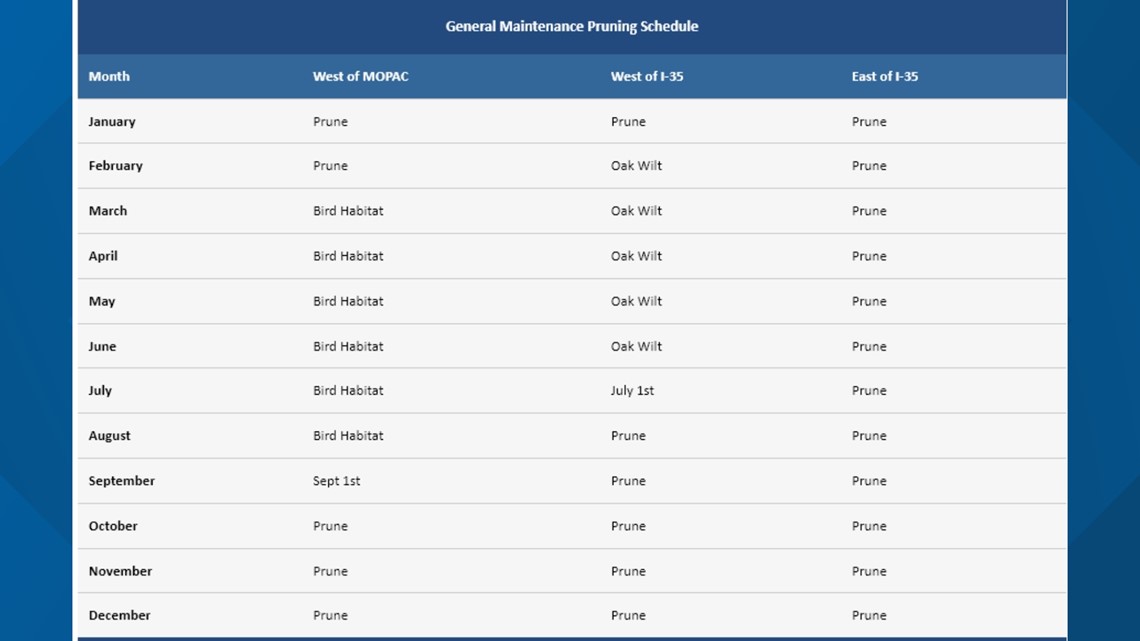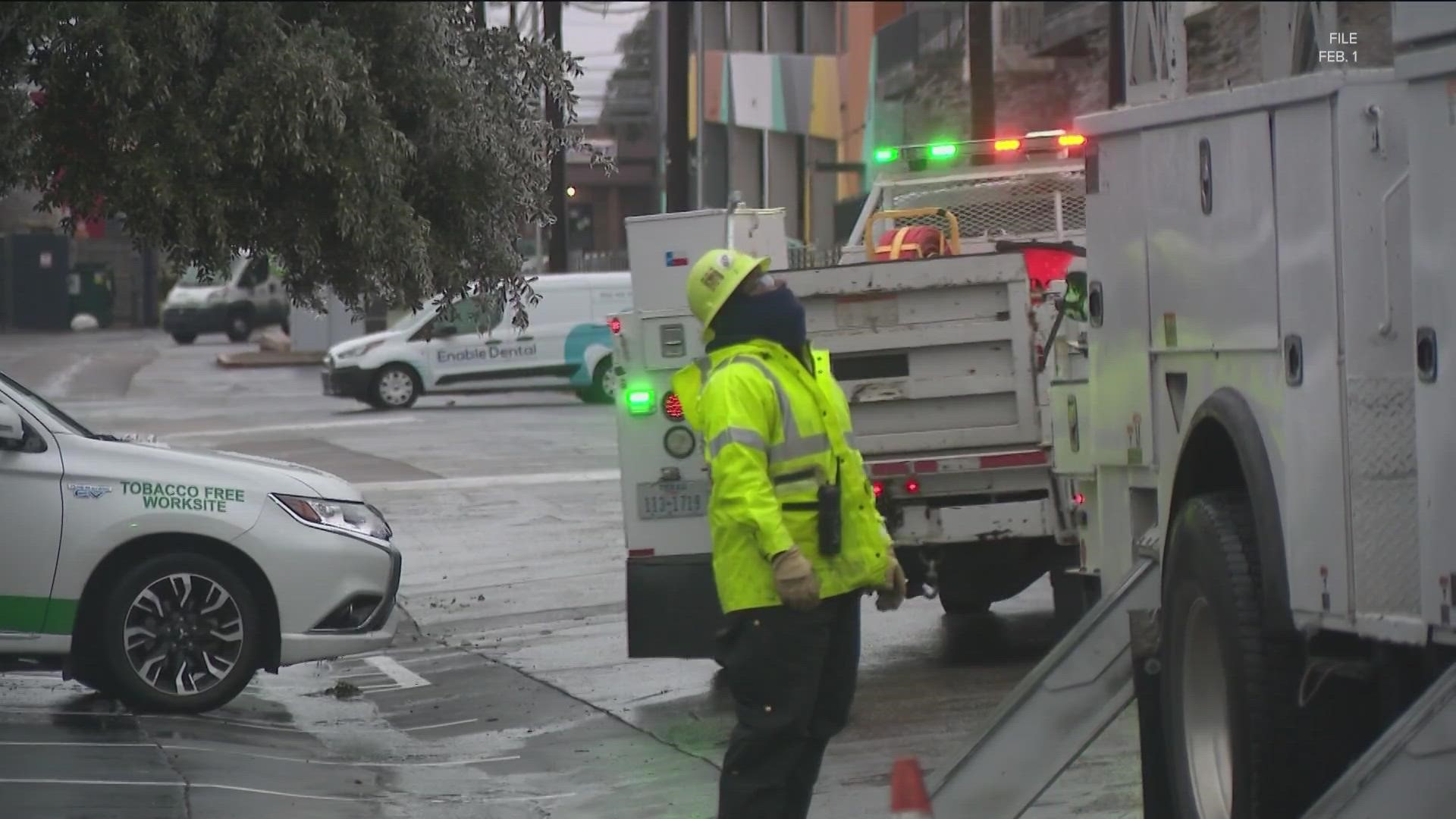AUSTIN, Texas — Ice on power lines and nearby branches is to blame for most of Austin Energy’s power outages this week.
Austin Energy’s website shows tree clearance is based on the type of tree.
Fast-growing trees, like pecan, have a 15-foot clearance. The slow-growing species, like cedar, have a 10-foot clearance. Any trees near high-voltage transmission cables must be trimmed 25 feet back.
Austin Energy’s website shows three contracting companies were hired to help clear a backlog of work around the city.
“Vegetation management is something that we're very focused on. Over the past several years we have increased our budget and our focus to trim trees. We could really use help in that area with getting our residents to understand the importance of vegetation management, to allow our crews in, to get the vegetation management done. We can always be better,” Jackie Sargent, general manager for Austin Energy, said in a press conference Thursday.
Before Austin Energy trims any tree, the company considers the seasons that oak wilt peaks at and if any tree contains bird habitats.
“We make every effort to avoid trimming red oak and live oak trees between February through June when oak wilt is more likely to spread. When possible, we avoid trimming from March to September to protect Golden-cheeked Warbler and Black-capped Vireo habitat areas (applies to undeveloped areas west of MoPac). However, we conduct limited trimming on oak trees during the oak wilt window in areas that are experiencing frequent vegetation-related outages or emergency situations,” Austin Energy's website shows.


Although trimming trees is important, it does not guarantee safety from falling limbs.
“We have policies that are given to us that direct our vegetation management programs. And because we want to preserve the beautiful urban canopy that we have here, we often are only allowed to do V-cuts for certain portions of the line,” Sargent said.
Sargent said that types of trimming can weaken the trees and can lead to problems like what happened this week.
“We'll be working with our policymakers to help us with that,” Sargent said.
Austin Energy's website states that the company trims trees in cycles. In a typical cycle, tree trimming lasts for seven years – but some faster-growing trees may require trimming midway through the cycle.
One solution to reduce the amount of trees breaking and falling onto power lines is to bury them. According to Sargent, it is not cost-effective to bury all power lines.
“It's very expensive to retrofit a system and go back and bury power lines, very expensive, billions of dollars. A lot of areas in our region have limestone. It's not like you're in Iowa and you can just plow a trench and put the lines in. A lot of our services are behind homes, in alleyways or back in between lots. That becomes very challenging as well,” Sargent said.
Sargent also explained that buried lines can bring other weather-related challenges.
“They're vulnerable to flooding. And if they do have an outage, it's more difficult to identify where the break in the power line is, where the damage has occurred. And then you have to excavate, find that and replace cable and you might have to replace long lengths of cable. And so the outages that customers experience from a buried line are typically much longer than from overhead lines,” Sargent said.
Austin Energy has not been alone this week, as local distribution power lines across Texas had outages. To speed-up recovery, Austin Energy has asked for mutual aid to help assist the company in getting residents' power back.

